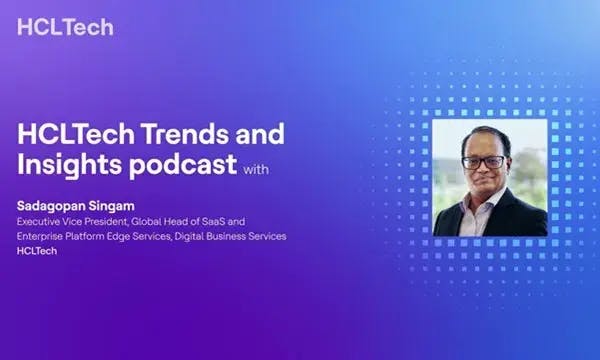Video
Section CTA
Retail 5.0: Driving customer experience with AI-led operating models
As Retail 5.0 takes shape, AI-driven operating models are becoming the backbone of execution — powering everything from predictive logistics to real-time customer engagement

As Retail 5.0 takes shape, AI-driven operating models are becoming the backbone of execution — powering everything from predictive logistics to real-time customer engagement

Srinivas Lakkaraju, SVP at HCLTech and Henry Calvert, Head of Network at GSMA, explore how their collaboration is driving telecom innovation through the open gateway initiative

Srinivas Kompella, Senior Vice President of Data and AI Enterprise at HCLTech, discusses how a product‑aligned operating model enables enterprises to scale AI with agility, trust and repeatability

Sadagopan Singam, EVP at HCLTech, discusses how enterprises are turning to a product and platform-led operating model that embeds AI into decision-making and innovation

Playing now
Empowering people for a sustainable future: HCLTech’s purpose-driven approach
Vipul Arora, Global Head, Sustainability at HCLTech, explores how investments in employee wellbeing, equity and innovation are redefining what meaningful impact looks like for modern enterprises

Chau Dang, VP of Operations, Governance and Strategy at Verizon Business, outlines the critical role of AI and cloud in transforming telecom
Podcast
Section CTA
Subscribe to the HCLTech Newsletter
for our latest news and insights
Primary button

















